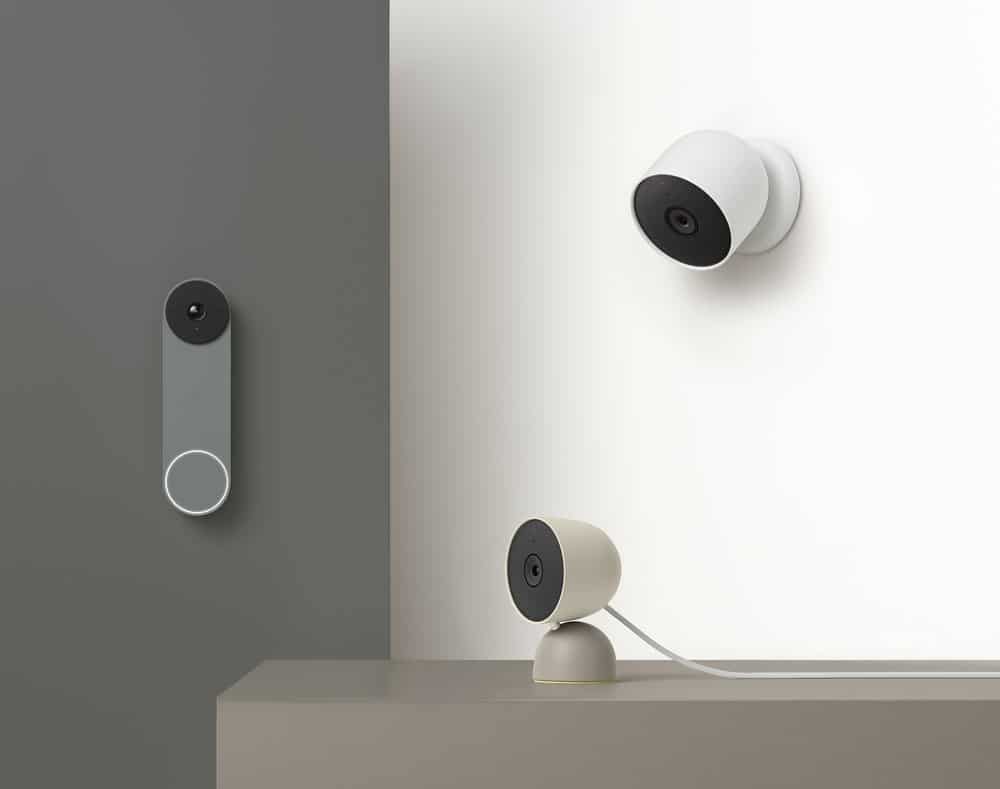Google is introducing updates to the Nest camera line with a new version of the Google Nest Doorbell and several new versions of the Google Nest Cam. The company is also toning down the Nest Cam’s restrictive business model, which previously has all but required paying a monthly subscription fee to get a useful camera.
We’ll get to the new models in a minute, but the biggest news is that Google is making the cameras more useful without a monthly subscription. Previously, core camera features like recording video were locked behind a $6-$12 monthly subscription plan called “Nest Aware,” but the new cameras can now record local video. You only get three hours’ worth of “events” (motion detection, as opposed to 24/7 video), but it’s a start. Google has also moved activity zones and some image recognition features from the cloud-based pay-per-month service to on-device processing, so they work without a subscription, too.
If you still want to pay for the “Nest Aware” subscription, it comes in two tiers. There’s the $6 “Nest Aware,” which gives you 30 days of “event” video history and facial recognition. The free tier can detect and alert you about people, animals, and vehicles, but the subscription adds facial recognition for “familiar faces” so Nest can tell if a loved one or stranger is at the door and alert you accordingly. The $12-per-month tier is “Nest Aware Plus,” which provides 60 days of event video history and 10 days of 24/7 video history if you have a wired (not battery-powered) Google Nest Cam (the doorbell can’t record continuous video).
Another big added quality-of-life feature is that the cameras can now work offline. Local storage and on-device processing mean the cameras can function without the Internet; previously, the cloud was the only way they had to process and store video. This addition will help if your Internet is spotty, but it will also be useful when Google’s Nest cloud service goes down, which happens fairly frequently.
Let’s talk hardware. Unveiled today, with a ship date of August 24, are the “Google Nest Cam (battery)” and the “Nest Doorbell (battery)” for $179 each. Both Wi-Fi-only cameras (up to 802.11n) have IP54 water resistance for outdoor use, speakers and microphones for voice communications, and motion sensors. The Nest Cam features a 1/2.8-inch, 2MP sensor for 1080p and 30 fps video output, while the doorbell has a 1/3 inch, 1.3 MP sensor, good for 960p video.
You might notice that “battery” designation after the name of each product: Nest cameras have on-board 6000 mAh batteries now, allowing the devices to work during a power outage. If you don’t want to do any installation work, the cameras can run entirely on batteries. Battery-powered operation is actually the default experience, and Google touts an easy, “Wire-free installation.” How long the battery lasts will depend on how many motion events happen per month, with Google predicting anywhere from 1.5 months to seven months of battery life, depending on traffic. After that point, you’ll have to pull the thing off the wall (the magnetic mounting system makes this very easy) and plug it in to recharge it.
Alternatively, you could save yourself a lifetime of recharging and just install a power wire. Included in the box is a 1 m (3.3 ft) “charging cable” that uses a proprietary pogo-pin connection, but for permanent outdoor installation, Google wants you to buy the 5 m Nest Cam Weatherproof Cable for $34.99. The Doorbell can recharge itself via your doorbell wire, which is also required if you want it to ring a traditional doorbell chime.
Google also announced the $99.99 “Google Nest Cam (wired),” which is indoor-only and has a fixed power wire, and the “Google Nest Cam with floodlight” for $279.99, which has two big lights on the side for outdoor lighting. Both were only teased and lack a launch date or detailed information.
Please don’t steal this totally wireless, magnetically mounted camera
OK, let’s put a few things together here. The Nest cameras work on Wi-Fi, so they don’t have an Ethernet wire. They can also run entirely on battery power, so there’s no power cable, either. And as has been the case for a while now, the connection system between the Nest camera and the wall mount is magnetic. So if the device is totally wireless and magnetically mounted, couldn’t someone just walk up and steal the camera?
Yep, that seems to be the case. Google actually has a support document saying that if someone walks off with your camera and you file a police report, the company will replace the device for free. You could mount it high enough off the ground to make it harder to steal, but you’ll still need to access the camera to charge it.
Google is also selling a $14.99 “anti-theft mount,” which clamps around the Nest camera and lets you tether the thing to the wall with a metal cable. At least someone thought about this before a rash of thefts started, but it seems like the security of a security camera should be more of a base-design consideration.
These new cameras also mark the beginning of the end for the Nest app. Since Nest moved from a separate Alphabet company to a Google sub-brand in 2018, Google has been working on phasing out the pre-merger Nest infrastructure. We’ve already seen the death of the “Works with Nest” ecosystem and Nest accounts, and these new cameras don’t use the Nest app at all and instead work via the Google Home app. The Nest app is just for legacy devices now.

